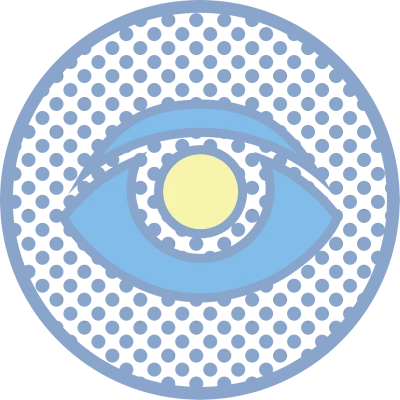What is Hypertensive Retinopathy?
It is damage to the retina and the retinal circulation (Blood vessels) due to systemic hypertension (i.e. high blood pressure). Patients with hypertensive Retinopathy will present with virtually no visual symptoms till profound vision loss. They usually report with headaches or blurred vision. Hypertension can also damage the choroidal circulation and is responsible for optic and cranial neuropathies. Hypertension may also present in the form of subconjunctival haemorrhages.

How Hypertension affects the eyes?
Systemic Hypertension is defined as a systolic pressure greater than 140 mm Hg or diastolic pressure greater than 90 mm Hg. Most ocular abnormalities are associated with systolic blood pressures greater than 160 mm Hg. Hypertension affects all organs in the body where small blood vessels are there, like Retina and Kidney.
Smaller blood vessels bear the most brunt of raised blood pressure. The diffuse arteriolar narrowing is characteristic of hypertensive Retinopathy, this is secondary to vascular constriction in acute Hypertension and due to raised cholesterol in chronic Hypertension.
An Insight into Hypertensive Retinopathy Treatment
In hypertensive Retinopathy, it is imperative to understand that the only way to treat or control it is by keeping high blood pressure in check. This can be achieved by bringing drastic changes in daily lifestyles like:
-
Practising yoga and regular exercise
-
Quitting habits like smoking and reducing alcohol intake
-
Losing weight and bringing dietary changes.
As mentioned above, symptoms of hypertensive retinopathy stages can be controlled by bringing healthy and positive life changes. In addition, if you want to take allopathy treatment, it is best to get in touch with a doctor who might suggest medications like calcium channel blockers, beta-blockers, angiotensin-2 receptor blockers (ARBs), ACE inhibitors, thiazide diuretics, and more to lower your high blood pressure levels.
In addition, with other effects, all these medications can also help the retina to heal while ensuring that no further damage takes place. While prescribing the required medication under hypertensive retinopathy treatment, the doctor will also consider the patient’s medical history while taking all the possible side effects into consideration.
Stages of Hypertensive Retinopathy
Below we have mentioned 5 hypertensive retinopathy stages:
Stage 0:
The patient has been diagnosed with Hypertension. There are no visible retinal vascular abnormalities.
Stage 1:
In this hypertensive retinopathy stage, diffuse arteriolar narrowing is seen, especially in the smaller vessels. Arteriolar calibre is uniform, with no focal constriction.
Stage 2:
Arteriolar narrowing is more pronounced, and there can be focal areas of arteriolar constriction.
Stage 3:
Focal and diffuse arteriolar narrowing is more obvious, and severe Retinal haemorrhages may be present.
Stage 4:
In this last hypertensive retinopathy stage, all the previously listed abnormalities may be present, along with retinal oedema, hard exudates, and optic disc oedema.
A Glimpse into Hypertensive Retinopathy Complications
Patients of hypertensive Retinopathy are vulnerable to several health-related complications like:
-
Retinal artery occlusion: This takes place when an artery in the retina of the eye gets closed or blocked due to clots that often result in vision loss.
-
Malignant Hypertension: This leads to a rapid spike in blood pressure which can cause vision loss. However, this is a rare occurrence that, in many cases, can be life-threatening.
-
Retinal vein occlusion: This condition takes place when a vein in the retina gets blocked because of clots.
-
Ischemic optic neuropathy: In this scenario, the normal blood flow that goes to the eye gets blocked, which damages the optic nerve of the eye. It is this part that transmits multiple images to the brain.
Other presentations of Hypertension besides Retinopathy
Hypertension does not only cause Retinopathy but is also associated with several other types of manifestation like Branch Retinal vein/artery occlusion, Central Retinal vein/artery occlusion, Optic disc edema and Macular star in severe Hypertension, particularly in young Hypertensives, Pregnant females with malignant Hypertension called as Pre-eclampsia and Eclampsia. The latter two may also develop Exudative Retinal Detachment.
-
Treatment for Hypertensive Retinopathy is to control your blood pressure.
-
Get Your blood pressure checked regularly.
-
Get baseline Eye / Retina examination once you get detected with Hypertension
-
Do not skip your hypertensive medicines without consulting your primary physician
-
Have a balanced diet to control Blood pressure
Frequently Asked Questions (FAQs) about Hypertensive Retinopathy
What is hypertensive retinopathy grading?
In the medical sector, hypertensive retinopathy grading happens across four stages or categories. This division is done via hypertensive retinopathy classification system known as Keith Wegener Barker grades.
- Grade 1: In this, narrowing of the arteries and high blood pressure are mild. In this grade/stage, there are no symptoms.
- Grade 2: Narrowing of arteries and high blood pressure is more elaborate, and barely any symptoms are present.
- Grade 3: There are visible signs of damage like bleeding or retinal haemorrhage with white patches on the retina. In this stage, symptoms may or may not be present.
- Grade 4: In this stage of hypertensive retinopathy grade 3+ papilledema or swelling of the optic nerve are clearly present.
What is silver wiring hypertensive retinopathy?
In silver wiring hypertensive Retinopathy, when there is thickening and chronic vascular wall hyperplasia, which gives off a reflection similar to silver.
What is the bonnet sign in hypertensive Retinopathy?
The diagnosis of hypertensive Retinopathy is based on fundoscopic features since it is asymptomatic in most cases. Below we have briefly mentioned three signs of Htn retinopathy:
- Gunn’s sign- This is referred to the tapering of the vein (retinal) on one of the sides of the AV crossing.
- Salu’s sign- This is the deflection of the vein (retinal) as it smoothly crosses over the arteriole.
- Bonnet’s sign- This is the banking of the vein (retinal) that is away from the AV crossing.
What are the symptoms of hypertensive Retinopathy?
Hypertensive Retinopathy does not show any clear signs or symptoms unless the situation deteriorates extensively. Below are some of the may symptoms of hypertensive Retinopathy:
- Swelling in the eyes
- Chronic headaches
- Double vision
- Bursting of blood vessels
- Reduced vision

Do not ignore eye trouble!
Now you can reach our senior doctors by booking an online video consultation or a hospital appointment
Book an appointment now